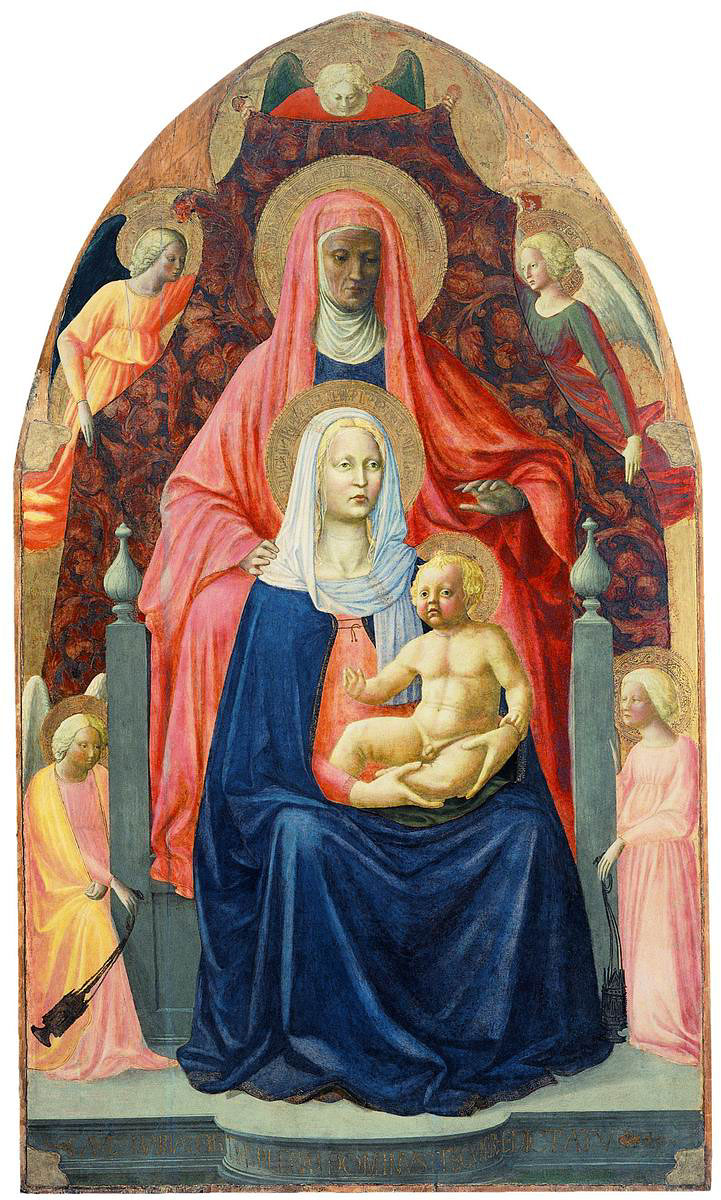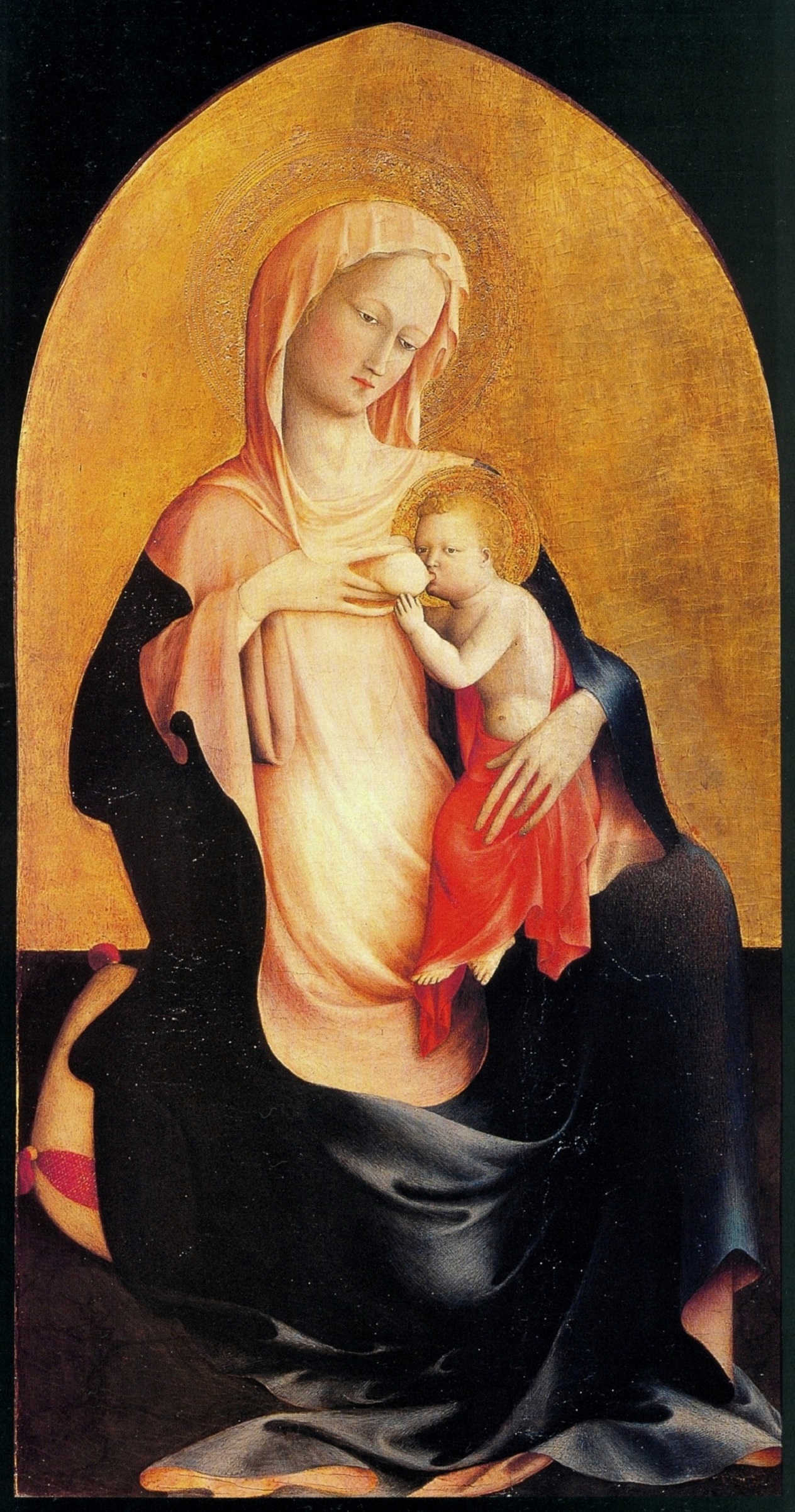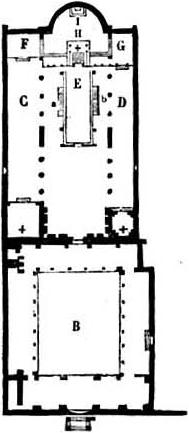|
Masolino Da Panicale
, death_date = ''c.'' 1447 , death_place = Florence , nationality = Italian , field = Painting, fresco , training = , movement = Italian Renaissance , works = frescoes in the Brancacci Chapel , patrons = Pipo of OzoraCardinal Branda Castiglione , influenced by = Lorenzo Monaco, Ghiberti, Massacio , influenced = Masolino da Panicale (nickname of Tommaso di Cristoforo Fini; c. 1383 – c. 1447) was an Italian painter. His best known works are probably his collaborations with Masaccio: '' Madonna with Child and St. Anne'' (1424) and the frescoes in the Brancacci Chapel (1424–1428). Biography Masolino ("Little Tom") was possibly born in Panicale near Florence. He may have been an assistant to Ghiberti in Florence between 1403 and 1407. In 1423, he joined the Florentine guild ''Arte dei Medici e Speziali'' (Doctors and Apothecaries), which included painters as an independent branch. He may have been the first artist to cr ... [...More Info...] [...Related Items...] OR: [Wikipedia] [Google] [Baidu] |
Panicale
Panicale is a ''comune'' (municipality) in the Province of Perugia in the Italian region Umbria. Located on the eastern slope of Mount Petrarvella, in the southeast of Valdichiana, it overlooks Lake Trasimeno and it is about 35 km far from Perugia. As of 31 December 2012, it had a population of 5,669 and an area of 78.8 km². The municipality of Panicale contains the ''frazioni'' (subdivisions, mainly villages and hamlets) Tavernelle, Colle San Paolo, Missiano, Casalini, Colle Calzolaro, Macereto, Mongiovino, Montale, Colgiordano, Gioveto and Migliaiolo. Panicale borders the following municipalities: Castiglione del Lago, Magione, Paciano, Perugia and Piegaro. Main sights * Church of Saint Sebastian, contains Pietro Perugino Pietro Perugino (, ; – 1523), born Pietro Vannucci, was an Italian Renaissance painter of the Umbrian school, who developed some of the qualities that found classic expression in the High Renaissance. Raphael was his most famous pupi ... [...More Info...] [...Related Items...] OR: [Wikipedia] [Google] [Baidu] |
Hungary
Hungary ( hu, Magyarország ) is a landlocked country in Central Europe. Spanning of the Pannonian Basin, Carpathian Basin, it is bordered by Slovakia to the north, Ukraine to the northeast, Romania to the east and southeast, Serbia to the south, Croatia and Slovenia to the southwest, and Austria to the west. Hungary has a population of nearly 9 million, mostly ethnic Hungarians and a significant Romani people in Hungary, Romani minority. Hungarian language, Hungarian, the Languages of Hungary, official language, is the world's most widely spoken Uralic languages, Uralic language and among the few non-Indo-European languages widely spoken in Europe. Budapest is the country's capital and List of cities and towns of Hungary, largest city; other major urban areas include Debrecen, Szeged, Miskolc, Pécs, and Győr. The territory of present-day Hungary has for centuries been a crossroads for various peoples, including Celts, Ancient Rome, Romans, Germanic peoples, Germanic trib ... [...More Info...] [...Related Items...] OR: [Wikipedia] [Google] [Baidu] |
Museo Di Capodimonte
Museo di Capodimonte is an art museum located in the Palace of Capodimonte, a grand Bourbon palazzo in Naples, Italy. The museum is the prime repository of Neapolitan painting and decorative art, with several important works from other Italian schools of painting, and some important ancient Roman sculptures. It is one of the list of largest art museums, largest museums in Italy. The museum was inaugurated in 1957. History The vast collection at the museum traces its origins back to 1738. During that year King Charles VII of Naples and Sicily (later Charles III, king of Spain) decided to build a hunting lodge on the Capodimonte hill, but then decided that he would instead build a grand palace, partly because his existing residence, the Palace of Portici, was too small to accommodate his court, and partly because he needed somewhere to house the fabulous Farnese art collection which he had inherited from his mother, Elisabetta Farnese, last descendant of the sovereign ducal ... [...More Info...] [...Related Items...] OR: [Wikipedia] [Google] [Baidu] |
Basilica Of St Mary Major
The Basilica of Saint Mary Major ( it, Basilica di Santa Maria Maggiore, ; la, Basilica Sanctae Mariae Maioris), or church of Santa Maria Maggiore, is a Major papal basilica as well as one of the Seven Pilgrim Churches of Rome and the largest Catholic Marian church in Rome, Italy. The basilica enshrines the venerated image of ''Salus Populi Romani'', depicting the Blessed Virgin Mary as the health and protectress of the Roman people, which was granted a Canonical coronation by Pope Gregory XVI on 15 August 1838 accompanied by his Papal bull ''Cælestis Regina''. Pursuant to the Lateran Treaty of 1929 between the Holy See and Italy, the Basilica is within Italian territory and not the territory of the Vatican City State.Lateran Treaty of 1929, Article 15 However, the Holy See fully owns the Basilica, and Italy is legally obligated to recognize its full ownership thereof and to concede to it "the immunity granted by International Law to the headquarters of the diplomatic ag ... [...More Info...] [...Related Items...] OR: [Wikipedia] [Google] [Baidu] |
Naples
Naples (; it, Napoli ; nap, Napule ), from grc, Νεάπολις, Neápolis, lit=new city. is the regional capital of Campania and the third-largest city of Italy, after Rome and Milan, with a population of 909,048 within the city's administrative limits as of 2022. Metropolitan City of Naples, Its province-level municipality is the third-most populous Metropolitan cities of Italy, metropolitan city in Italy with a population of 3,115,320 residents, and Naples metropolitan area, its metropolitan area stretches beyond the boundaries of the city wall for approximately 20 miles. Founded by Greeks in the 1st millennium BC, first millennium BC, Naples is one of the oldest continuously inhabited urban areas in the world. In the eighth century BC, a colony known as Parthenope ( grc, Παρθενόπη) was established on the Pizzofalcone hill. In the sixth century BC, it was refounded as Neápolis. The city was an important part of Magna Graecia, played a major role in the merging ... [...More Info...] [...Related Items...] OR: [Wikipedia] [Google] [Baidu] |
Masolino Annunciation
, death_date = ''c.'' 1447 , death_place = Florence , nationality = Italian , field = Painting, fresco , training = , movement = Italian Renaissance , works = frescoes in the Brancacci Chapel , patrons = Pipo of OzoraCardinal Branda Castiglione , influenced by = Lorenzo Monaco, Ghiberti, Massacio , influenced = Masolino da Panicale (nickname of Tommaso di Cristoforo Fini; c. 1383 – c. 1447) was an Italian painter. His best known works are probably his collaborations with Masaccio: '' Madonna with Child and St. Anne'' (1424) and the frescoes in the Brancacci Chapel (1424–1428). Biography Masolino ("Little Tom") was possibly born in Panicale near Florence. He may have been an assistant to Ghiberti in Florence between 1403 and 1407. In 1423, he joined the Florentine guild ''Arte dei Medici e Speziali'' (Doctors and Apothecaries), which included painters as an independent branch. He may have been the first artist to cr ... [...More Info...] [...Related Items...] OR: [Wikipedia] [Google] [Baidu] |
Masolino 008
, death_date = ''c.'' 1447 , death_place = Florence , nationality = Italian , field = Painting, fresco , training = , movement = Italian Renaissance , works = frescoes in the Brancacci Chapel , patrons = Pipo of OzoraCardinal Branda Castiglione , influenced by = Lorenzo Monaco, Ghiberti, Massacio , influenced = Masolino da Panicale (nickname of Tommaso di Cristoforo Fini; c. 1383 – c. 1447) was an Italian painter. His best known works are probably his collaborations with Masaccio: '' Madonna with Child and St. Anne'' (1424) and the frescoes in the Brancacci Chapel (1424–1428). Biography Masolino ("Little Tom") was possibly born in Panicale near Florence. He may have been an assistant to Ghiberti in Florence between 1403 and 1407. In 1423, he joined the Florentine guild ''Arte dei Medici e Speziali'' (Doctors and Apothecaries), which included painters as an independent branch. He may have been the first artist to cr ... [...More Info...] [...Related Items...] OR: [Wikipedia] [Google] [Baidu] |
Vanishing Point
A vanishing point is a point on the image plane of a perspective drawing where the two-dimensional perspective projections of mutually parallel lines in three-dimensional space appear to converge. When the set of parallel lines is perpendicular to a picture plane, the construction is known as one-point perspective, and their vanishing point corresponds to the oculus, or "eye point", from which the image should be viewed for correct perspective geometry. Kirsti Andersen (2007) ''Geometry of an Art'', p. xxx, Springer, Traditional linear drawings use objects with one to three sets of parallels, defining one to three vanishing points. Italian humanist polymath and architect Leon Battista Alberti first introduced the concept in his treatise on perspective in art, '' De pictura'', written in 1435. Vector notation The vanishing point may also be referred to as the "direction point", as lines having the same directional vector, say ''D'', will have the same vanishing point. Mathe ... [...More Info...] [...Related Items...] OR: [Wikipedia] [Google] [Baidu] |
Castiglione Olona
Castiglione Olona is a town and ''comune'' in the province of Varese, in Lombardy. As of 31 December 2015, it has a population of 7,753 inhabitants. History The town of Castiglione Olona rose around the fifth century CE under the Roman Empire domain. Consequently, the Lombards entered and took possession of the village until the Castiglioni family became sole proprietor of the land around 1000 AC. The family engaged in many battles for the rule of the lands so they had walls built all around the village to protect themselves from enemies. Today only a small part of the walls near the fortress is visitable. In 1422, cardinal Branda da Castiglione obtained the permission from Pope Martin V to build the church of Collegiata (Santi Stefano e Lorenzo); the church contains frescoes attributed to Masolino. In the town, the 15th and 16th century palace of cardinal Branda now serves as a museum, still contains a chapel and a number of frescoed walls, some attributed to Sienese painter Vec ... [...More Info...] [...Related Items...] OR: [Wikipedia] [Google] [Baidu] |
Todi
Todi () is a town and ''comune'' (municipality) of the province of Perugia (region of Umbria) in central Italy. It is perched on a tall two-crested hill overlooking the east bank of the river Tiber, commanding distant views in every direction. In the 1990s, Richard S. Levine, a professor of Architecture at the University of Kentucky, included Todi in academic design exercises aimed at conceiving hypothetical improvements to the city and presented its results in a conference titled "The Sustainable City of the Past and the Sustainable City of the Future". As a result, the Italian press incorrectly reported on Todi as ''the world's most livable city''. History According to the legend, said to have been recorded around 1330 BC by a mythological Quirinus Colonus, Todi was built by Hercules, who here killed Cacus, and gave the city the name of ''Eclis''. Historical Todi was founded by the ancient Italic people of the Umbri, in the 8th-7th century BC, with the name of ''Tutere'' in ... [...More Info...] [...Related Items...] OR: [Wikipedia] [Google] [Baidu] |
Basilica Of San Clemente
The Basilica of Saint Clement ( it, Basilica di San Clemente al Laterano) is a Latin Catholic minor basilica dedicated to Pope Clement I located in Rome, Italy. Archaeologically speaking, the structure is a three-tiered complex of buildings: (1) the present basilica built just before the year 1100 during the height of the Middle Ages; (2) beneath the present basilica is a 4th-century basilica that had been converted out of the home of a Roman nobleman, part of which had in the 1st century briefly served as an early church, and the basement of which had in the 2nd century briefly served as a mithraeum; (3) the home of the Roman nobleman had been built on the foundations of republican era villa and warehouse that had been destroyed in the Great Fire of AD 64. History This ancient church was transformed over the centuries from a private home that was the site of clandestine Christian worship in the 1st century to a grand public basilica by the 6th century, reflecting the emergin ... [...More Info...] [...Related Items...] OR: [Wikipedia] [Google] [Baidu] |




